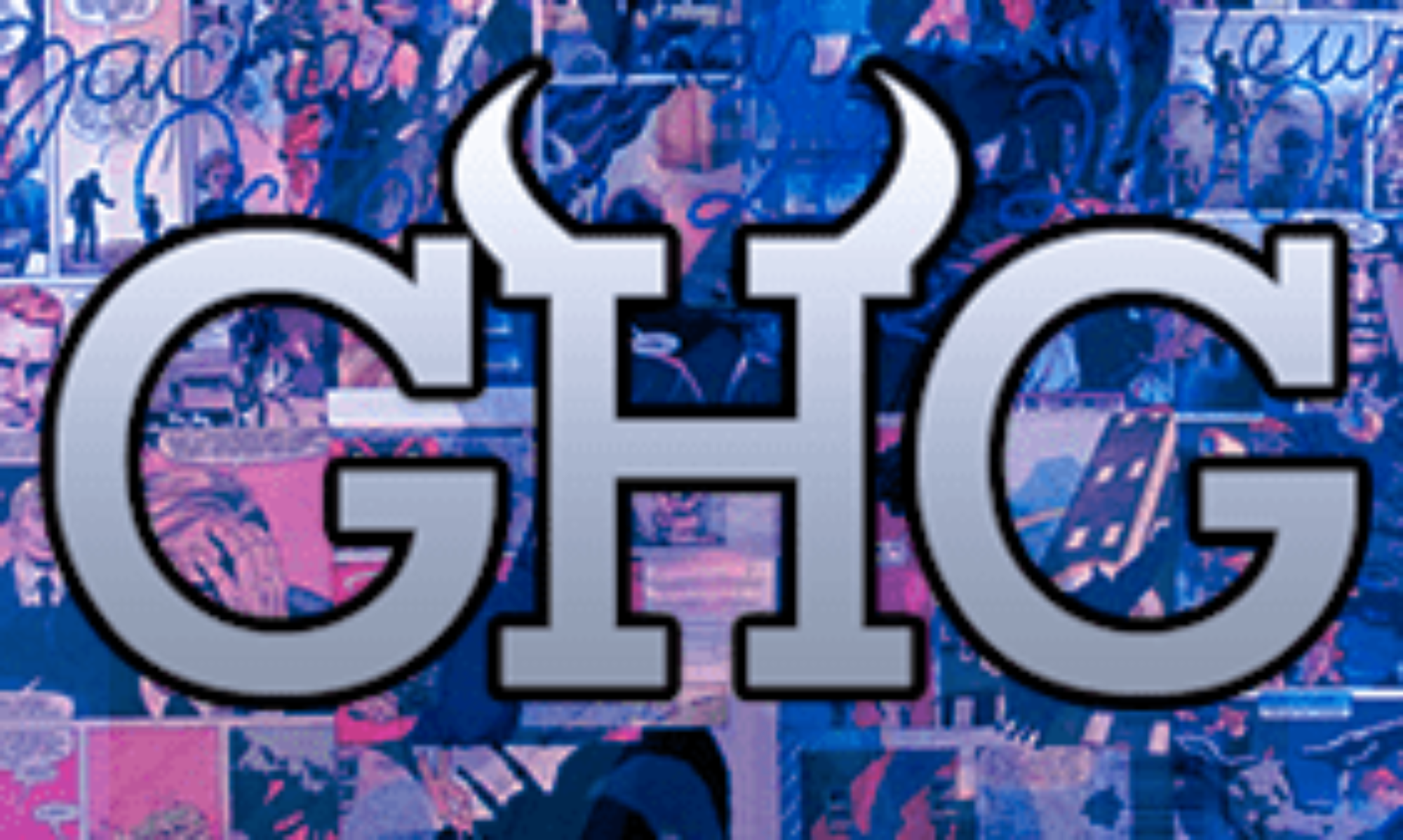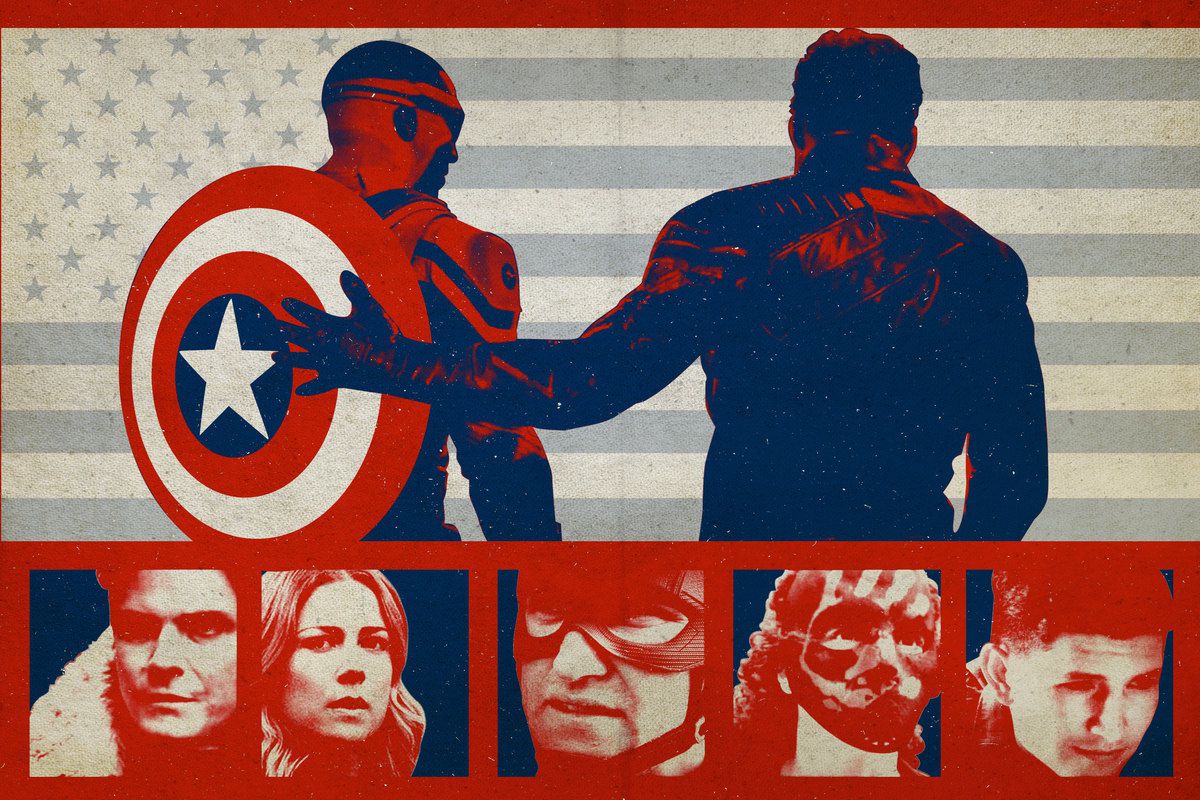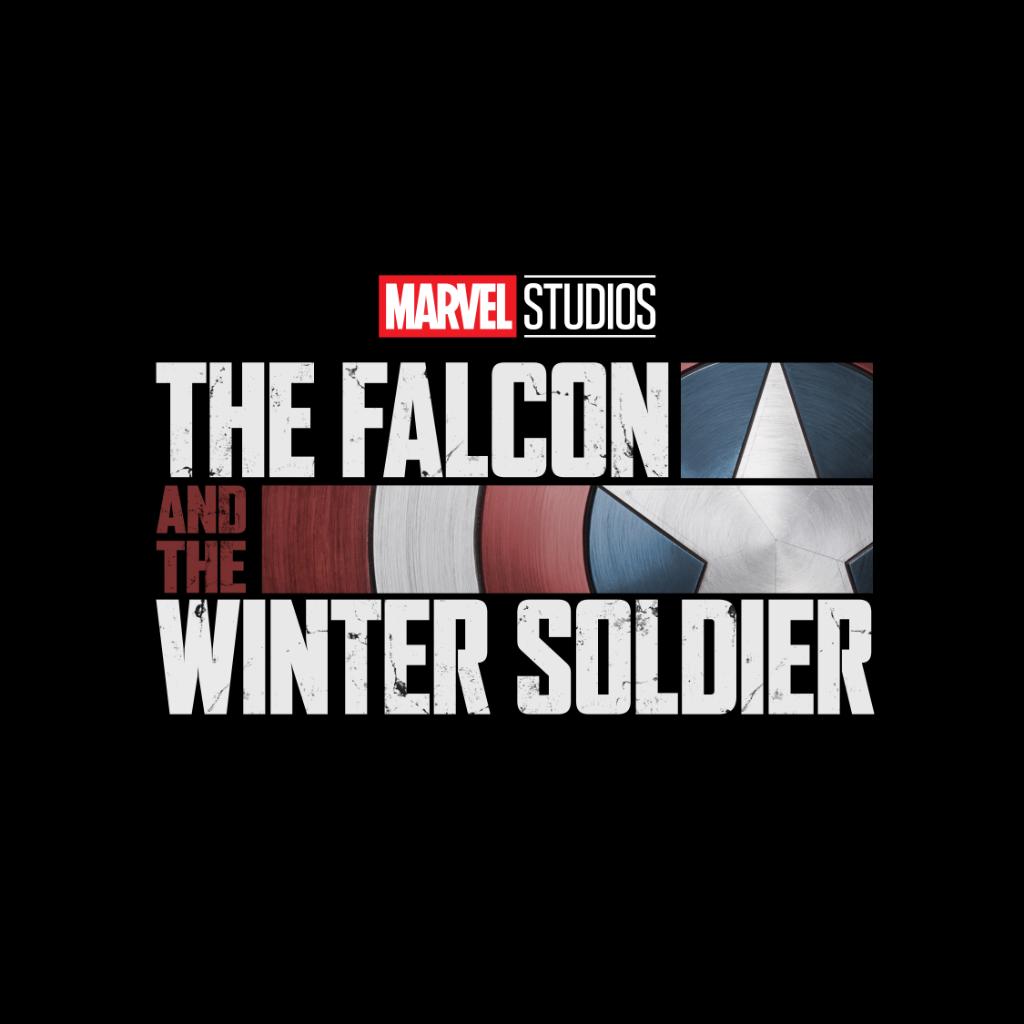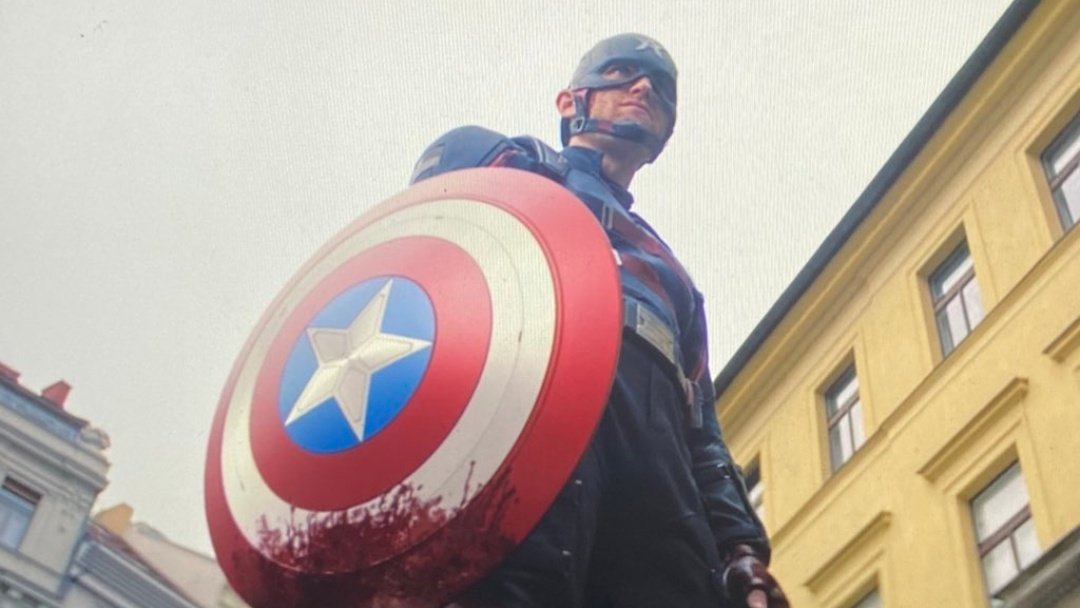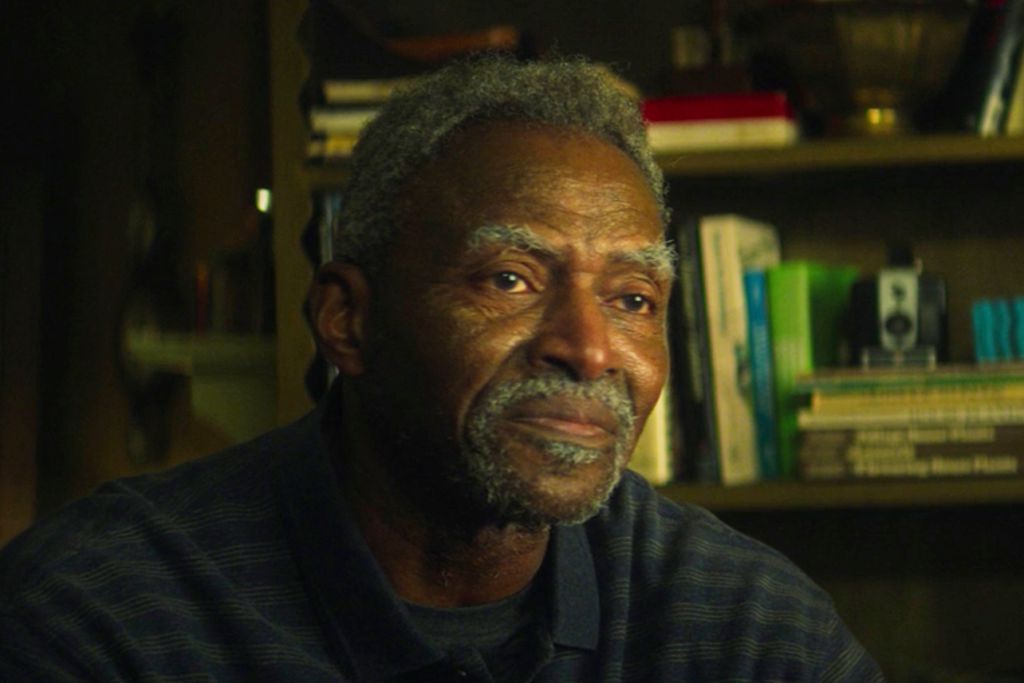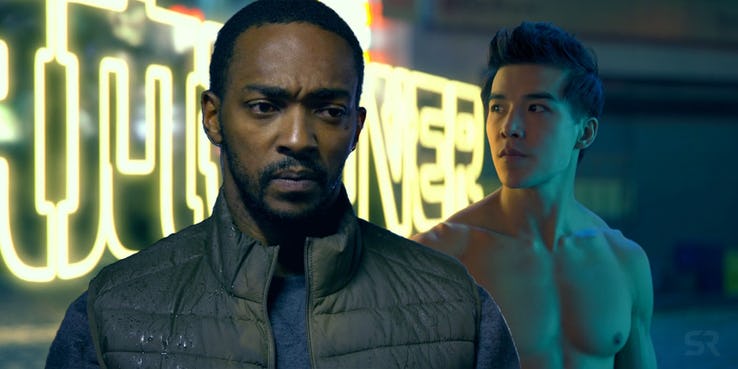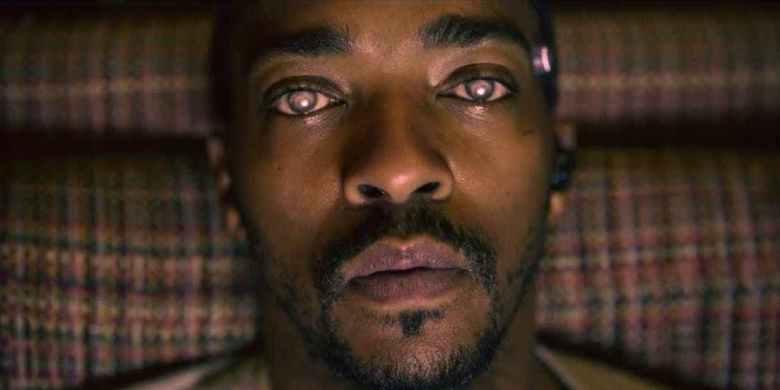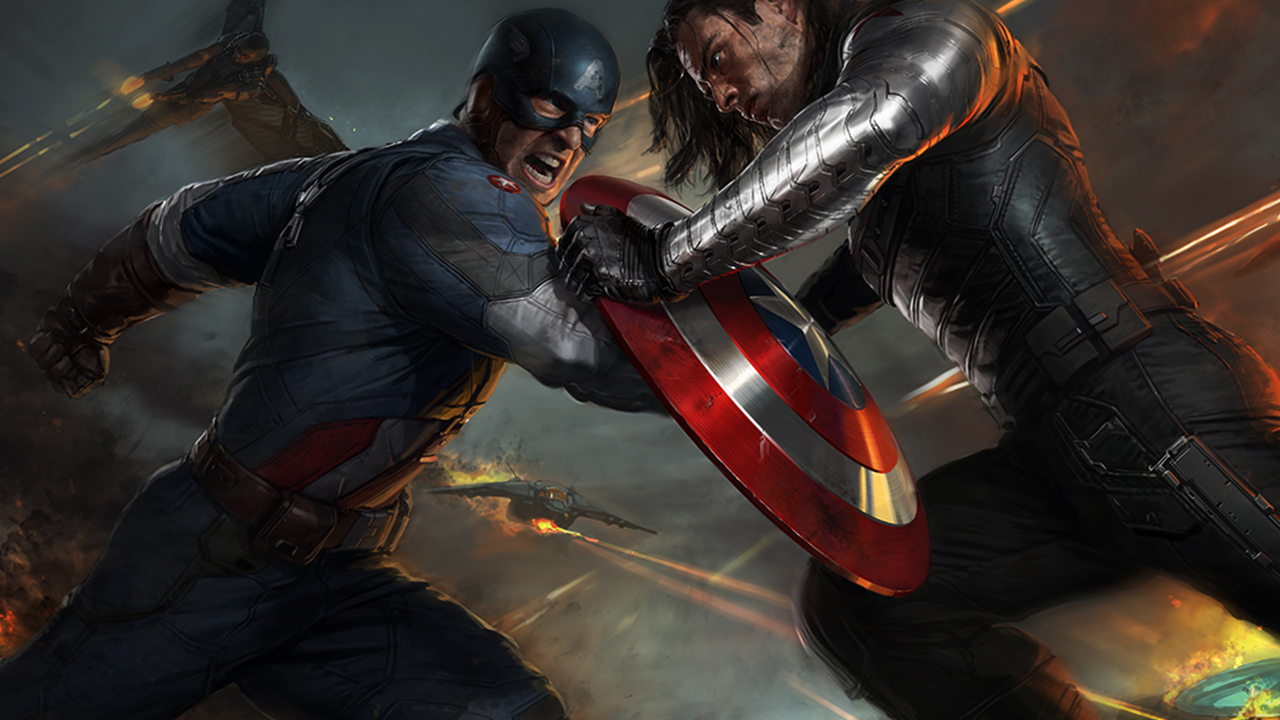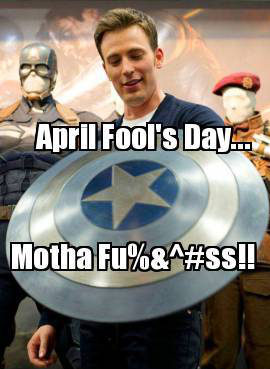So, A Black Captain America, huh?
Damn Right.
-Isaiah Bradley and Sam Wilson

@TheBelser
Howdy, folks! The Belser is back again here on the rechristened GeeksHaveGame and happy to be back on the review tip. My review today will be of the latest Disney Plus Marvel television show, The Falcon and the Winter Soldier. Now, of all the many shows that were announced to be launched on Disney Plus, this is the one I was anticipating the most…
WandaVision was a pleasant surprise and I’m sure LOKI will be wonderful in its own right; but this is more my jam. Captain America is my favorite of the original Avengers and the Cap films in the MCU are the best (and most consistent). Let’s explore how the franchise translates into the world of television, shall we?
SYNOPSIS
Picking up right after Avengers: Endgame, Sam Wilson (Anthony Mackie) is struggling with the decision made by Steve Rogers to anoint him the shield and the mantle of Captain America. Sam does not see himself as worthy of the title and donates the shield to the Smithsonian. Sam wants to lay the legacy of his friend to rest, but the U.S. government has other ideas. They anoint a new Captain America of their own choosing in the form of decorated vet John Walker (Wyatt Russell).
Meanwhile, a new militant group called The Flag Smashers led by Karli Morgenthau (Erin Kellyman) are on the scene to revert the world back to the way it was during the Blip. With the.. reluctant.. help of Steve’s best friend, Bucky Barnes (Sebastian Stan), Sam goes on a journey to discover, not only why he was chosen to be the new Captain America, but also to discover for himself that he is truly the best man for the job.
A COMPLICATED LEGACY

This show brings up some very interesting questions about the legacy of Captain America. Obviously, for his contributions in World War II and his time as the leader of the Avengers, Steve Rogers forged a legacy and reputation that would make it nearly impossible for any man to try to step into his shoes. This show illustrates that point at an almost non-stop rate. However, the image of Captain America raises a lot of interesting questions that were built into in the series.
Outdated ideals: Captain America himself is a product of World War II propaganda. Many of the characters throughout the show consider those ideas to be relics in this new world that we live in. Is Captain America the idea of what we want America to be or is it what America actually is?
What makes a Super Soldier?: The Super Soldier Serum is the main McGuffin used throughout this series. It is pursued and/or ingested by many different characters with varying results. This speaks to the words of Abraham Erskine in Captain America: The First Avenger:
“The serum amplifies everything that is inside, so good becomes great, bad becomes worse.”
There are many episodes on where the characters debate among themselves if the idea of a super soldier is even right and debate the applications of being a super soldier:
- Baron Zemo (Daniel Bruhl) feel they should be outlawed, feeling the desire to become one cannot be separated from supremacist ideals.
- Sam Wilson refuses to become one altogether.
- John Walker becomes one to satisfy a need for power and control.
- Karli Morgenthau and the Flag Smashers use it to facilitate change but fall into extremist methods.
Race: This show tackles the idea of racial inequality in this country more openly than any other Marvel project outside of Luke Cage on Netflix. In particular, the idea of American society accepting a black man in the role of Captain America given the tragic history of black people in the country. Cap is, for all intents and purposes, is supposed to be the perfect blond-haired, blue-eyed white bread representation of the ultimate ‘All-American Hero‘. Steve Rogers is the ‘idealist‘ America while Sam is the ‘true‘ America. This is definitely the first time that the MCU itself has openly delved into such a controversial subject. I highly commend Marvel and Disney for having the the wherewithal to even approach the subject the way they did.
BELSER’S TOP 3
While I enjoyed many of the characters on the show, let’s highlight the three that stood out the most to me:

SAM WILSON
Though he shares the billing of the show with The Winter Soldier, this show is clearly mainly about Sam’s journey to becoming the new Captain America. Initially, he is hesitant to take on the mantle because of the huge legacy and the responsibilities associated with it. However, as the story progresses, we, the audience, see why Sam was chosen. His empathy, his leadership qualities and his ability to communicate rather than resort to violence make him the perfect candidate to be the new Cap. More importantly, we see how this journey makes Sam himself realize that he has to take on this mantle rather than put it in the hands of others. To paraphrase Erskine once more, Sam was chosen not because he is ‘a perfect soldier‘. He was chosen because he is ‘a good man‘.
FACT: Sam’s new Captain America suit being created by the Wakandans is a nod to the comics in which Black Panther is responsible for Sam’s flying harness.
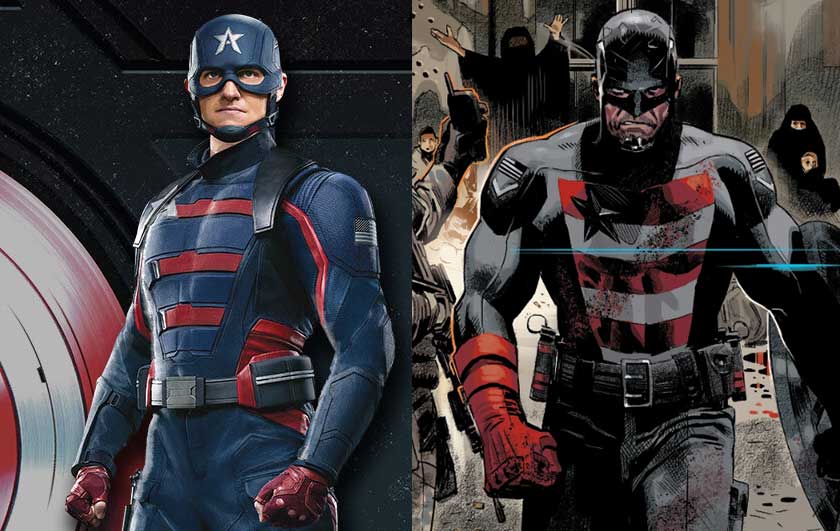
JOHN WALKER
As the government’s handpicked candidate for Cap, Walker essentially seen as a sort of newfound version of Cap’s initial U.S.O. persona: a cartoonish celebrity meant to represent all the positive imagery that America wishes to convey to the world. However, Walker is shown to be the enforcement officer for the agenda of the GRC (Global Repatriation Council). Walker seems to relish in the power of being Captain America. However, he frequently does not get the respect that he feels he deserves due to that title. That disrespect, plus the massive responsibility that has been heaped on his shoulders, causes him to undergo quite a psychological change and become more violent and power-hungry.
FACT: In the comics, John Walker starts out as a glory hog superhero wannabe called Super Patriot. His whole purpose was to stage fights in which he would win and then use the media coverage to bash Steve Rogers as Captain America. Also, he and Lemar Hoskins (Battlestar) received their powers from the Power Broker.
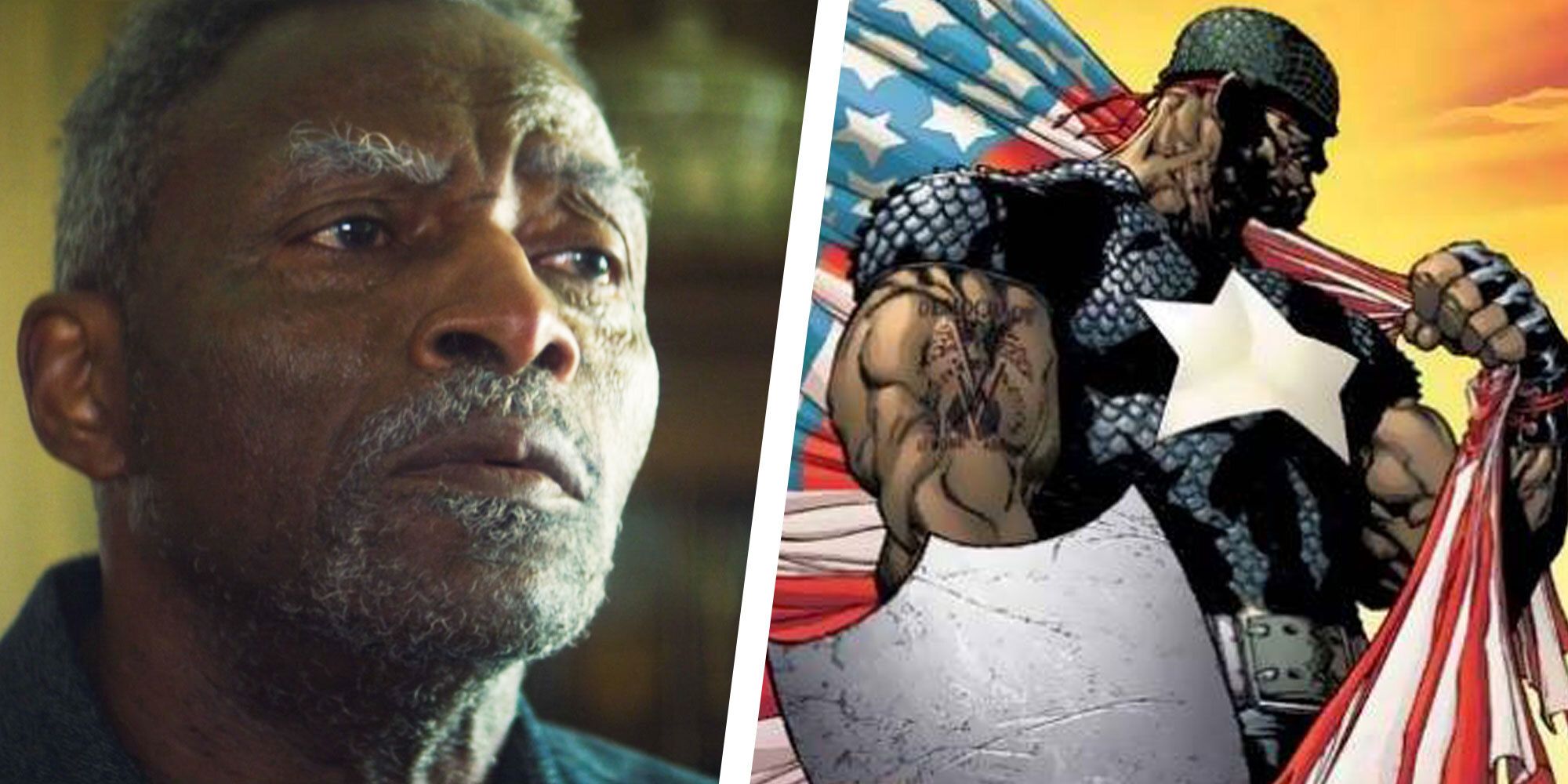
ISAIAH BRADLEY
This was the character I anticipated the most as he makes his live action debut in this series. Isaiah is shown here is being a super-soldier created after World War II and used mainly during the Korean War. However, because of his race, Isaiah was highly disrespected and subjected to inhumane treatment and torture for 30 years. After being declared dead, current-day Isaiah has a justifiably bitter disposition towards the U.S. government and the mantle of Captain America. Isaiah’s point of view on the subject matter of a black Captain America is really the most compelling to me of any character on the show.
FACT: While Isaiah is shown to be coherent in the series, the comic book version of Isaiah has a much more tragic fate: His version of serum is shown to be unstable. It leaves him sterile and deteriorates his mind to that of a small child.
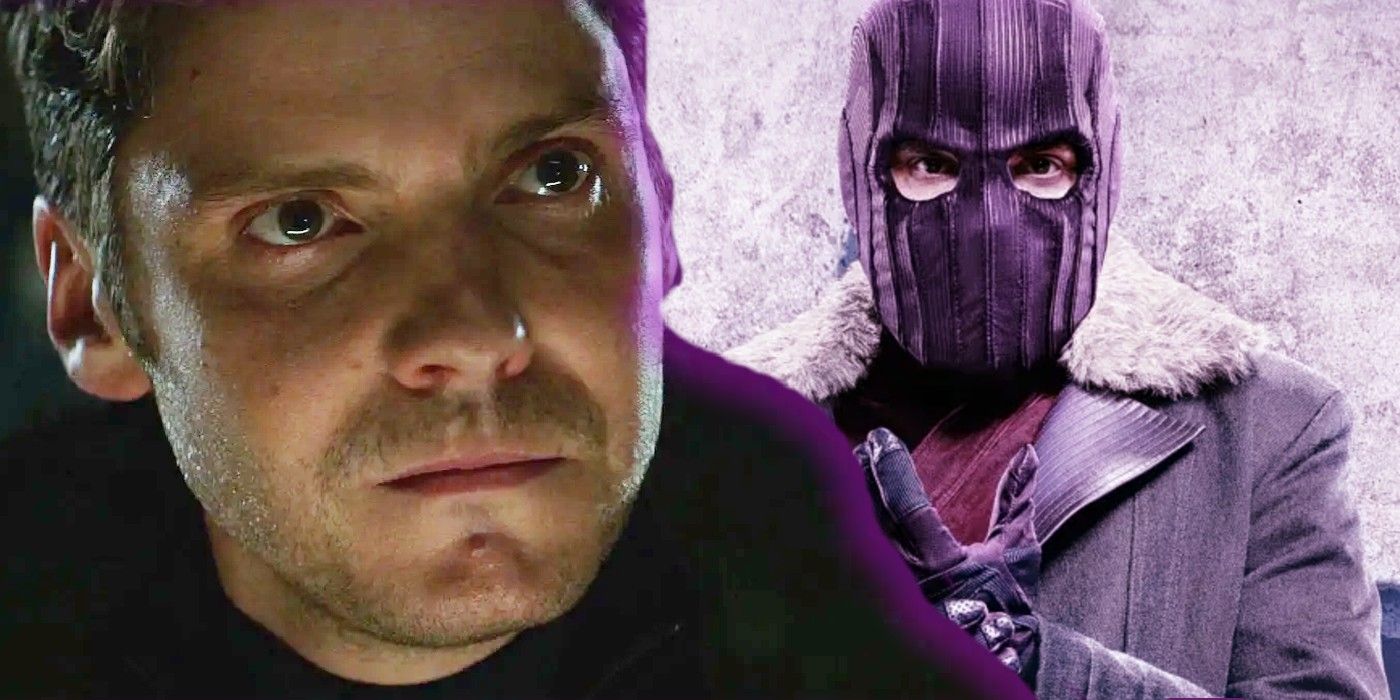
BREAKOUT- BARON ZEMO
The re-emergence of Daniel Bruhl as Baron Zemo has really become a huge boon for the series . After escaping from prison, Zemo helps Bucky and Sam track down the Power Broker, which eventually leads them to Karli. The MCU does a slight retcon to the character. Zemo is not just a soldier in the Sokovian Special Forces as seen in Captain America: Civil War; He’s actually a rich Baron with access to a private plane, a butler and expensive flats all around the world. His charming and mysterious manner has made him an internet sensation. A simple clip of him dancing in episode three went viral, having millions of Internet fans calling for the release of the Zemo Cut (basically an hour of extended material showing Zemo dancing to a techno beat).
FACT: In the comics, Baron Zemo is an official German title with a long lineage. There have been 13 Baron Zemos, two of which (Heinrich and Helmut) became arch-enemies of Captain America.
FAV EPS
“The Whole World is Watching”
“I agree with your fight. I just can’t get with the way you’re fighting it.” – Sam to Karli
Bucky is given eight hours to use Zemo before the Wakandans take him, as Zemo killed their king T’Chaka. Zemo helps them find Karli Morgenthau at a funeral for her adoptive mother. Sam speaks with Morgenthau alone and attempts to persuade her to end the violence, but an impatient Walker intervenes, and a fight ensues. Zemo destroys most of the serum before he is apprehended by Walker, who secretly takes the last vial. Ayo and the Dora Milaje come for Zemo, but Walker refuses to hand him over. In the ensuing fight, the Dora Milaje humiliate Walker while Zemo escapes. Walker engages other members of the Flag Smashers, leading to another fight in which Karli accidentally kills Lemar Hoskins, Walker’s partner.
Best Moment: John Walker mercilessly kills a member of The Flag Smashers with Captain America’s shield in full view of a large crowd. The image of this new Captain America standing with the shield tainted with blood is as iconic and striking an image the MCU has ever produced. Just looking at the chatter and the reactions online, I would say this will probably be the most brutal MCU moment since Thanos’s “Snap” in Avengers: Infinity War.
“Truth”
“They will never let a black man be Captain America. And even if they did, no self-respecting black man would ever wanna be.” – Isaiah Bradley
After the public murder of the Flag Smasher, Sam and Bucky take the shield from Walker, breaking Walker’s arm in the process. Bucky finds Zemo in Sokovia and hands him over to the Dora Milaje. For the murder, John Walker is given an other than honorable discharge and is stripped of his title as Captain America. Afterward, Walker is approached by Contessa Valentina Allegra de Fontaine. Wilson leaves the damaged wingsuit with Torres and visits Bradley for a heartfelt talk. Wilson returns home and helps fix the family boat, with assistance from several locals and Barnes, who delivers a briefcase from the Wakandans to Wilson. Barnes and Wilson train with the shield and agree to move on from their pasts and work together. The Flag Smashers plan an attack on a GRC conference in New York City and are joined by Batroc, who Carter has secretly hired.
BEST MOMENT

The one on one conversation between Isaiah Bradley and Sam Wilson in Isaiah’s living room is one of the most powerful scenes the MCU has ever produced. During which, Isaiah states his belief that a Black man cannot, and should not, be Captain America. It’s heartbreaking and eerily realistic. The information given by Isaiah to Sam about his tragic history is almost verbatim the storyline of that character in the comic book mini series TRUTH: RED, WHITE AND BLACK (the main differences being that Isaiah’s story in the comic is set in World War II and his wife does not die).
“One World, One People”
“I’m a Black man carrying the stars and stripes. What don’t I understand? Every time I pick this thing up, I know there are millions of people out there who are going to hate me for it. Even now, here, I feel it. The stares, the judgement, and there’s nothing I can do to change it. Yet, I’m still here. No super serum, no blond hair, or blue eyes. The only power I have is that I believe we can do better.” – Sam Wilson
Sam Wilson makes his public debut as Captain America, wearing a new uniform and flight suit as he flies to New York to stop the Flag Smashers’ attack on the GRC. With the help of Barnes, Sharon Carter, and John Walker, Sam attempts one last time to reason with Morgenthau before Sharon kills her. The remaining Flag Smashers are caught and sent to the Raft, but they are killed by Zemo’s butler. De Fontaine gives Walker a new uniform and codename: U.S. Agent. Barnes makes amends with everyone he hurt or enabled as the Winter Soldier. Lastly, Sam has a memorial dedicated to Isaiah Bradley added to the Captain America museum exhibit at The Smithsonian.
Best Moment: Having saved the GRC, Sam takes them to task in front of the world media with an impassioned speech. Wilson convinces the GRC to postpone the forced relocation of displaced people that Morgenthau died fighting for and instead make efforts to help them.
Trivia:
Carl Lumbly, the actor who plays Isaiah Bradley, is a veteran of superhero shows: He was the voice of The Martian Manhunter in the Cartoon Network DC shows Justice League and Justice League Unlimited. He was also the star of M.A.N.TI.S. on FOX, the very first live action show based on an African-American superhero.
One of the more controversial scenes of the series in episode one in which Sam Wilson is denied a bank loan (despite the fact he’s known worldwide as an Avenger). Sam explains that the Avengers do not get paid for the services as they live off of the goodwill of others. In the comics, The Avengers actually DO get paid. While on active duty, The Avengers receive a monthly stipend through The Maria Stark Foundation, a trust fund founded by Iron Man specifically to fund The Avengers and not interfere with Stark Industries. They are also provided full access to the amenities of the Avengers Mansion including housing and the many gadgets and vehicles at their disposal.
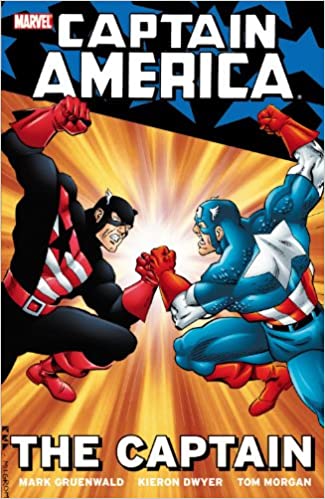
The vast majority of the storyline of this series is based on the storyline entitled “The Captain“, written by Mark Gruenwald. Starting from Captain America issue #332 to #350, the storyline featured an organization known as The Commission On Superhuman Affairs as they try to force Steve Rogers to abide by their will. It is revealed that when Steve agreed to become Captain America , he had signed up to serve as “America’s official mascot” and the Captain America uniform, shield, and name were all property of the U.S. government. When Rogers refuses to comply, he gives up the title of Captain America and is replaced by John Walker. In the end ,Walker proves to be too unstable and Rogers has to return to stop him.
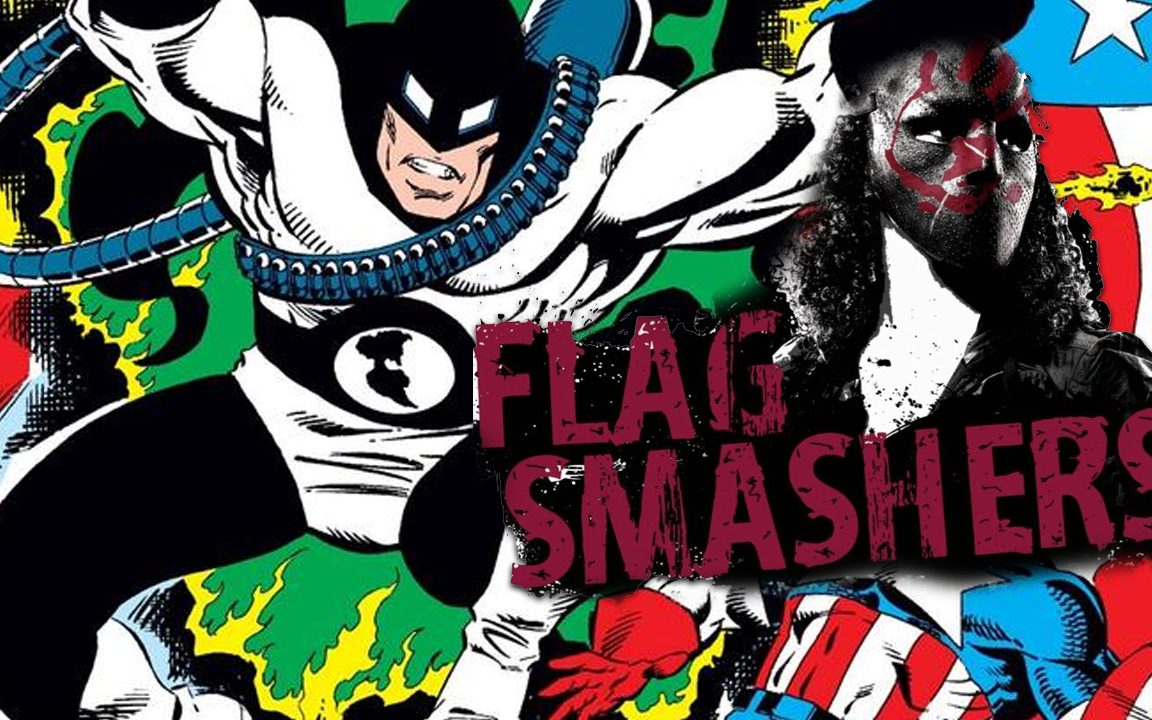
Morgenthau is actually a gender-swapped version of The Flag Smasher from the comics, whose name is Karl Morgenthau. Both characters have the same prime motivation: the end of nationalism by forcibly uniting all of the countries in the world into one sovereign government. The Flag Smasher group itself is also identical to a group that the comic book Flag Smasher started called Ultimatum.

In episode three, Sam, Bucky and Zemo visit the city of Madripoor. The appearance of Madripoor is the first overt MCU Easter egg that involves the X-Men. Like in the comics, Madripoor is a haven for criminals and pirates. At some point , the island was the home to groups like Hydra and the X-Men themselves. The biggest Easter egg was during the montage in Madripoor where the camera stopped at a place called The Princess Bar. The Princess Bar in the comics is co-owned by none other than Wolverine (while using his alias ‘Patch’).
OVERALL IMPRESH
I was pleased beyond compare with how the show turned out. It’s an every way a worthy companion to the Captain America film franchise and and the the buzz surrounding the show has now created the demand for a Captain America 4. My suggestion would be for them to do the Secret Empire storyline which Steve Rogers becomes the head of Hydra and Sam Wilson — as Captain America — has to stop him. I think that will be a fantastic storyline to put on film and to see the switch of Chris Evans Steve Rogers to a villain will be amazing to see. 5/5 Shots of Patriotic Whiskey.
-JaDarrel Belser
